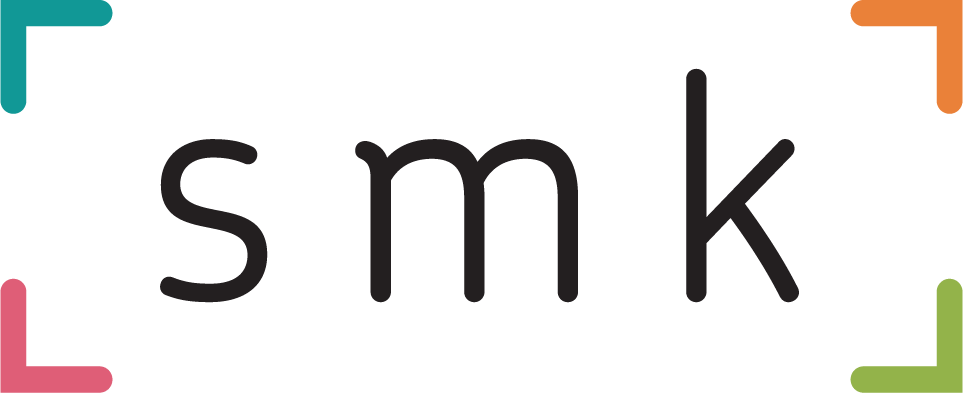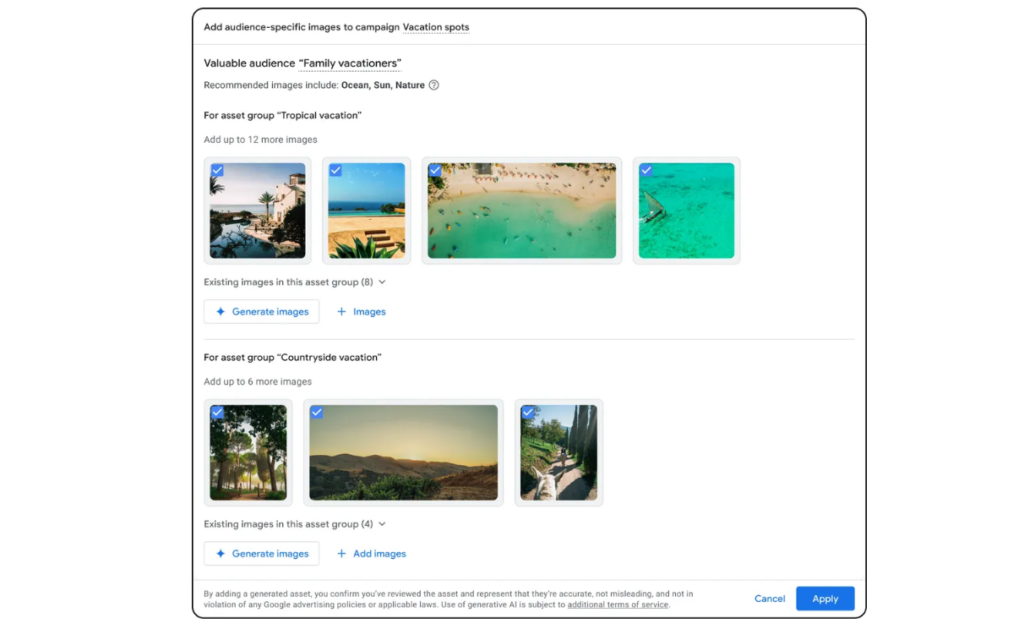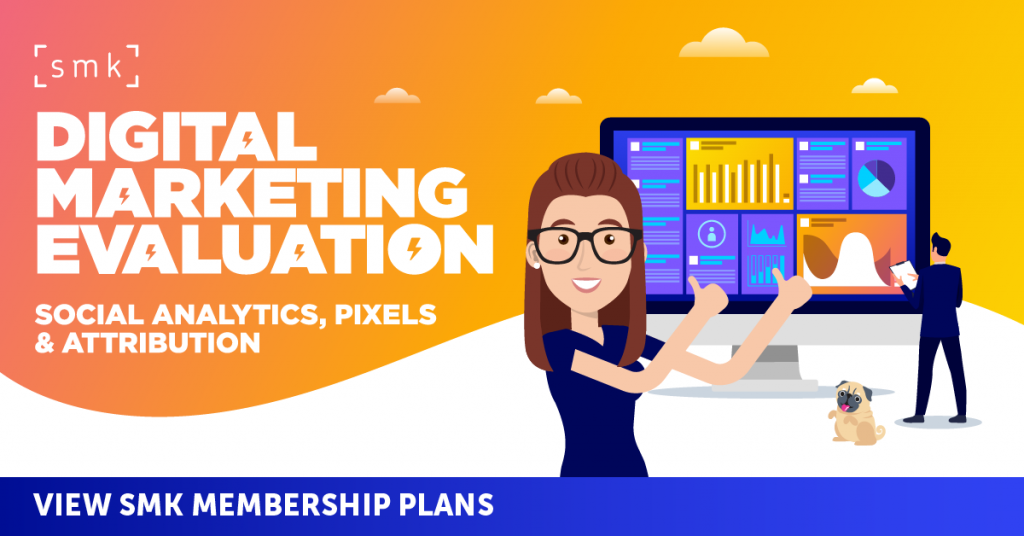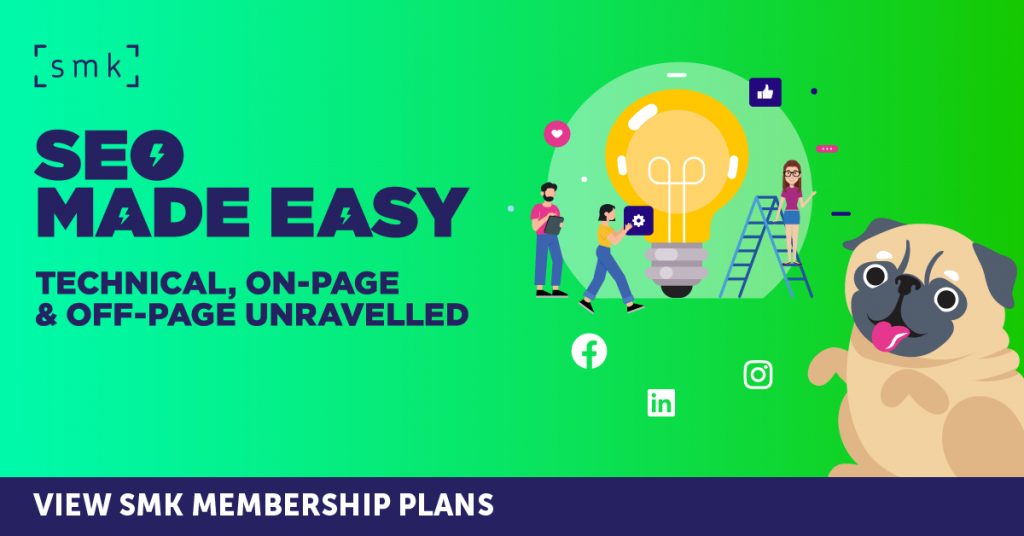Google is rolling out a series of AI-driven updates to its Performance Max campaigns, bringing new capabilities designed to enhance creative assets, improve audience targeting, and optimise ad performance. These updates include:
- Improved AI-generated images, including depictions of human characters
- Asset-audience recommendations, helping advertisers choose the most effective visuals
- New asset testing capabilities, allowing brands to measure the impact of different creative elements
With these enhancements, Google aims to help advertisers produce more engaging, high-quality assets while streamlining the creative process. Here is a breakdown of what these updates mean for marketers and how they can be leveraged to drive better campaign results.
More Realistic AI-Generated Images for Ads
Google introduced AI-generated images for Performance Max last year, but the latest update significantly improves the quality, particularly when depicting human characters. With the integration of Imagen 3, Google’s AI now allows advertisers to generate images of adult people across multiple campaign types, including Performance Max, Demand Gen, Display, and Apps campaigns.
This means brands can now create high-quality, realistic lifestyle imagery tailored to their audience without needing professional photography. For example:
- A cooking instructor promoting classes could generate an image of a “middle-aged man chopping carrots.”
- A fitness brand could create visuals of a “young woman jogging in a park.”
Advertisers can refine prompts by specifying age, gender, race, ethnicity, and nationality to align with their audience demographics. However, there are restrictions. Google does not allow the generation of images of brand-named products, celebrities, politicians, minors, or explicit content.
To ensure transparency, all AI-generated images are tagged with SynthID, a watermarking system that identifies AI-created visuals.
How AI-Generated Images Benefit Advertisers
Faster Creative Production
The ability to instantly generate custom visuals reduces the time and cost involved in producing high-quality advertising assets. This makes it easier for brands to quickly test and refine creative elements without waiting for photoshoots or design revisions.
More Personalised and Targeted Ads
By allowing advertisers to specify demographic attributes in image generation, ads can be tailored to better reflect and resonate with different audience segments.
Increased Engagement and Performance
Research shows that ads featuring people tend to be more emotionally engaging. With more realistic AI-generated images, brands can create ads that feel more authentic and relatable to their audience.
Asset-Audience Recommendations: Smarter Visual Selection
Google is also introducing asset-audience recommendations, which suggest themes and visual elements that are most effective for an advertiser’s target audience. This feature analyses historical performance data to identify the types of visuals that drive the best engagement.
For example, a travel brand may discover that images featuring nature, ocean, and sun perform well with their audience. These insights help advertisers refine their creative approach without extensive A/B testing.
Additionally, Google will soon provide AI-generated image suggestions, offering advertisers fresh creative ideas without requiring them to manually source new assets.
New Asset Testing Capabilities for Performance Max
To further optimise ad performance, Google is introducing a new asset testing feature. This allows advertisers to compare the impact of adding text, image, and video assets, including AI-generated visuals, to campaigns with no creative assets.
Retailers using Performance Max with product feeds can now participate in a beta test that evaluates whether adding creative elements enhances performance. This feature builds on Google’s past experiments, such as testing the impact of Final URL expansion within Performance Max.
What These Updates Mean for Marketers
More Creative Flexibility with AI-Generated Images
Brands can now generate a wider range of visuals without relying on external photographers or designers. However, advertisers should still carefully review AI-generated images to ensure they align with their brand’s visual identity.
Data-Driven Visual Optimisation
Asset-audience recommendations provide actionable insights into what works best for different audience segments, reducing guesswork in creative selection.
Improved Performance Through Asset Testing
Marketers can now experiment with different creative elements to see what drives the highest engagement and conversions, refining their strategy based on real-time data.
Potential Cost Savings
By reducing the need for expensive photoshoots and manual A/B testing, these AI-driven updates can help brands maximise ad performance while keeping costs in check.
How Advertisers Can Take Advantage of These Updates
- Experiment with AI-Generated Images – Test different prompts to create lifestyle visuals that match your brand’s tone and messaging.
- Use Asset-Audience Recommendations – Leverage Google’s insights to choose high-performing creative elements that align with your audience’s preferences.
- A/B Test Your Creative Assets – Use the new asset testing feature to evaluate which visuals, copy, and formats drive the best results.
- Monitor Performance Metrics – Track engagement rates, conversion metrics, and ad performance to refine creative strategies over time.
Google’s latest AI-powered updates for Performance Max bring exciting opportunities for advertisers looking to enhance their creative assets and campaign effectiveness. By offering improved AI-generated images, data-driven asset recommendations, and advanced testing capabilities, Google is helping brands create more relevant, engaging, and high-performing ads with greater efficiency.
While these tools provide valuable automation, advertisers should still take an active role in reviewing, testing, and refining their creative assets to ensure they align with their brand identity and campaign goals.




RECOMMENDED FOR YOU
LinkedIn Streamlines B2B Influencer Marketing
LinkedIn has introduced a more intuitive way for brands…
LinkedIn has introduced a more intuitive way for brands…
Meta Adds New AI Tools To Supercharge Lead Gen
Meta is rolling out a wave of updates to…
Meta is rolling out a wave of updates to…
Meta Announces Business AIs For Brand Websites
Meta is moving further into the AI assistant space…
Meta is moving further into the AI assistant space…